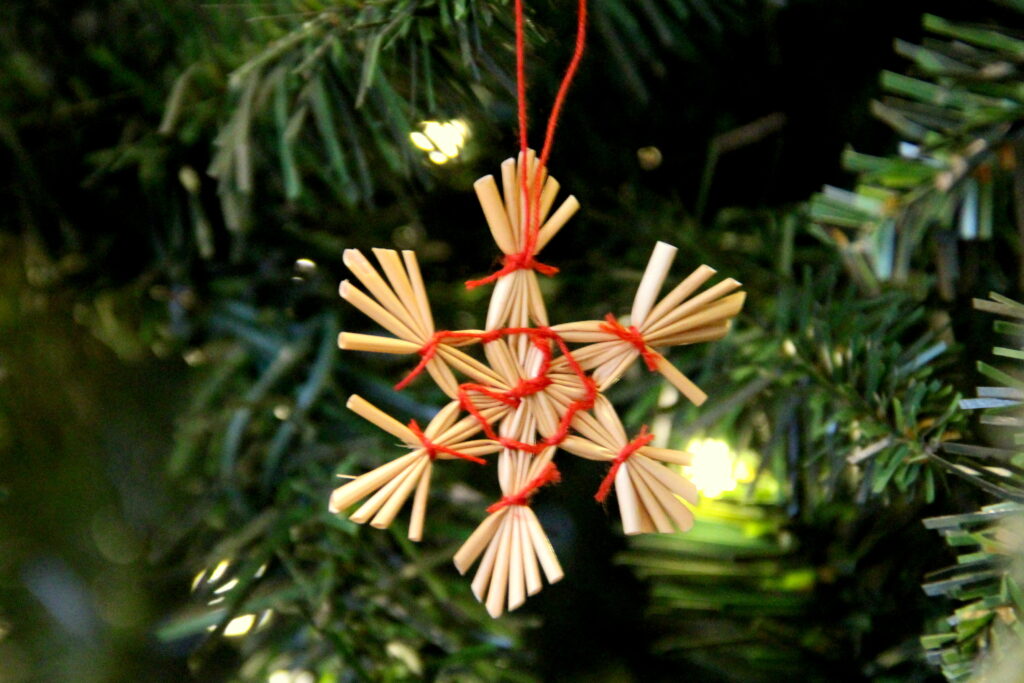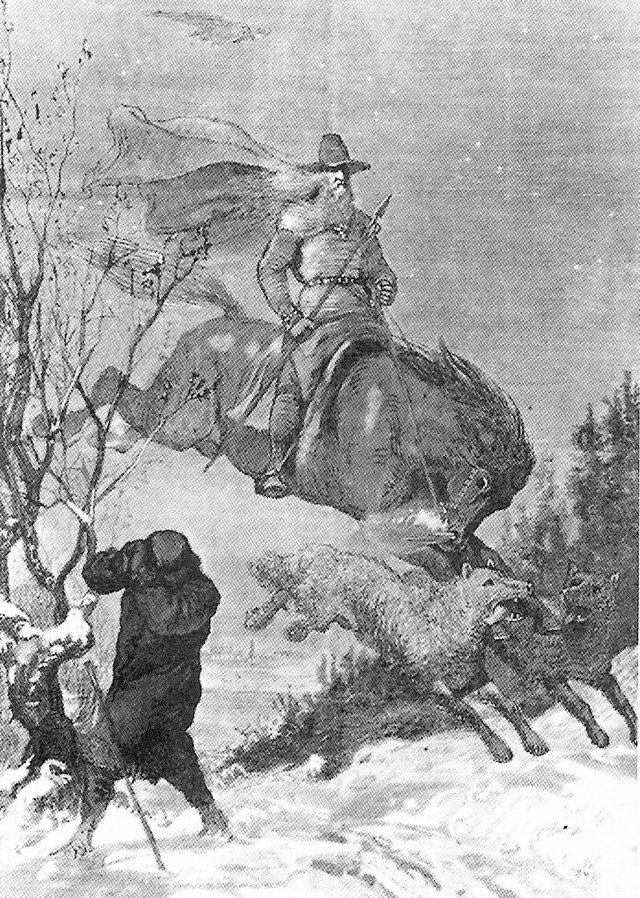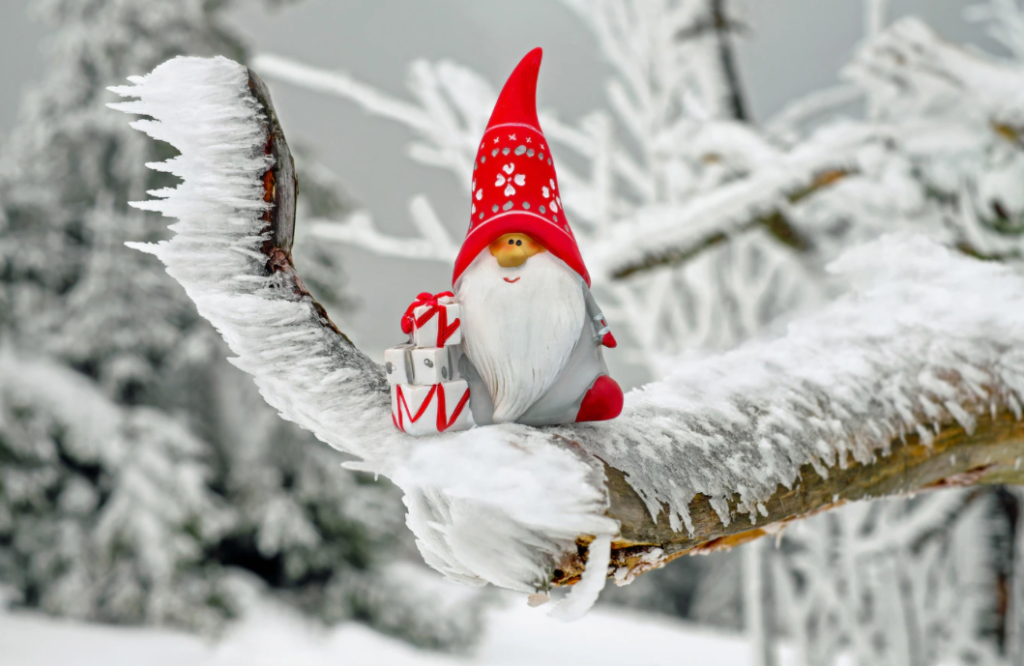Christmas, at its very heart, is a hazy holiday, a Christian twist on a an ancient, pagan celebration — or rather, several ones that were mixed together. To top it all off, we have the Victorian tales of Christmas Past and the consumerist present-buying tradition that seem to have completely taken over our festive season.
In essence though, Christmas remains a pagan celebration. The Roman festival of Saturnalia is a precursor to it, culminating with the Kalends in which people would give presents to their loved ones and celebrated by feasting and drinking (sounds familiar?). Yuletide from the Germanic people is another precursor and in some ways, it’s still very much alive and celebrated.
Yuletide is a midwinter festival celebrated from at least the 4th century by the German gothic populations. It is connected to the mythical Wild Hunt, the Norse god Odin, and the Anglo-Saxon Mōdraniht. Today, Yule is directly celebrated in some forms of Neopaganism, but many of us still carry out many Yuletide rituals (though we may not be aware of it).

Hunting for Yuletide
The winter season wasn’t always the jolly spend-time-with-your-family period we know today. It used to be a dark and dangerous time, with many families struggling to even get through the winter at all. Famine was not uncommon. For many ancient peoples, the winter solstice (December 21) was a time where you’d basically make your prayers and hope for spring to come. So if you look at winter holidays, it’s unsurprising that they often have darker origins.
It’s also unsurprising that Europe, and the English-speaking world especially, draws so heavily from Germanic myth. After all, we all know Thursday (or “Thor’s day”) and Friday (“Frigga’s day”), with Thor and Frigga being two major Norse gods. Yule comes from the old Norse jól (or the old English géohol), which was a season for hunting. But Yule and are also connected to a different type of hunt: the Wild Hunt.
The Wild Hunt was recently popularized in media by the Witcher Franchise, which was immensely popular. The Wild Hunt is an old folkloric motif represented by a pack of spectral hunters (either Odin or some local figure). It was said that the ethereal hunters were accompanied by ghost dogs, fairies, or even Valkyries that would either take away the souls of anyone who saw them or bring great misfortune. You really wouldn’t want to chance seeing the Wild Hunt, so all the more reason to stay inside and mind your own business, especially during December, when the specters were thought to be most active.

The Wild Hunt was described by Jacob Grimm (one of the Grimm Brothers) in 1835, who noted that variations on this myth appear in many parts of Northern, Western, and Central Europe. But by the time Grimm wrote his work, the Wild Hunt had already changed its meaning and had become christianized. No longer was the Wild Hunt bringing catastrophe to everyone who was around — it only targeted the unchristened.
“Another class of spectres will prove more fruitful for our investigation: they, like the ignes fatui, include unchristened babes, but instead of straggling singly on the earth as fires, they sweep through forest and air in whole companies with a horrible din. This is the widely spread legend of the furious host, the furious hunt, which is of high antiquity, and interweaves itself, now with gods, and now with heroes. Look where you will, it betrays its connexion with heathenism,” wrote Grimm.
Mōdraniht (or “Mother’s Night) was also associated with Yule and Christmas. It was an Anglo-Saxon festival atested by the medieval English historian Bede in the 8th century. It’s not clear exactly what happened at Mōdraniht, but it seems to be a fertility celebration that probably included sacrificial rituals. A description of Yule practices is also provided by Snorri Sturluson, a famous Icelanding poet and historian.
“It was ancient custom that when sacrifice was to be made, all farmers were to come to the heathen temple and bring along with them the food they needed while the feast lasted. At this feast all were to take part of the drinking of ale. Also all kinds of livestock were killed in connection with it, horses also.”
Christianity swoops in

Yule celebrations were already happening in the 4th century, and probably even before that. But as Christianity came in, things started to change.
The Christian knew they couldn’t really get people to cancel their traditional celebrations, so they did something else: they tried merging pagan celebrations with Christian ones. This is excellently portrayed in Saga of Hákon the Good, which credits the Norwegian King Haakon I (whose rule started in 934) as rescheduling Yule to fit with Christmas.
Yule had been celebrated for three days: starting from the Winter Solstice on the 21st of December, and it was all moved to center around Christmas’ 25 December (although some celebrations started much earlier, at some point around mid-November). In fact, it seems just as if not more likely that it’s not pagan celebrations that were moved, but rather Christmas itself. There’s no historic indication that puts Jesus’ birth on the 25th of December, and it wasn’t always celebrated on that date. In fact, it seems very unlikely. It’s entirely possible that Christmas was moved to fit with the existing Saturnalia and Yule celebrations, which would make the transition to Christianity more acceptable for local populations.
Norway isn’t the only country that did this: at various stages of their Christianization, other European countries adapted their previous celebraitons and switched to Christmas — but many traditions remained.
Celebrating Yuletide in modern times
In fact, we find most of the Christmas traditions in the darkness of history, with roots extending to the distant past. Spending time inside, with your family, feasting and celebrating? Sounds like Yule. Caroling and singing Christmas songs? That’s called Yule singing or Wassailing, and it’s been done since Old Norse times. The Yule Log? Well, that’s obviously Yule.

There are other traditions too. Mulled wine is a Yuletide special, the mistletoe representing female figure was used for Yule fertility celebrations, and the Christmas tree is often called the Yule tree (though its origin doesn’t exactly stem from the old Yule). The Yule goat is also popular in Christmas depictions and decorations.
The Yule log is another interesting tradition, still carried out in many places: a big log is taken into the hearth and burned, sometimes for days on end. The idea behind is to use it as an emblem of the Sun, or alternatively, to help lend strength to the Sun so that it may re-emerge after the short and cold winter days. As early as 1725, Henry Bourne sought an origin for the Yule log in Anglo-Saxon paganism:
“It seems to have been used, as an Emblem of the return of the Sun, and the lengthening of the Days. For as both December and January were called Guili or Yule, upon Account of the Sun’s Returning, and the Increase of the Days; so, I am apt to believe, the Log has had the Name of the Yule-Log, from its being burnt as an Emblem of the returning Sun, and the Increase of its Light and Heat. This was probably the Reason of the custom among the Heathen Saxons; but I cannot think the Observation of it was continued for the same Reason, after Christianity was embraced.”
Another piece of information comes from writer and historian Washington Irving’s Christmas stories from The Sketch Book (1819) who recorded Christmas celebrations drawn from Yuletide:
“Here were kept up the old games of hoodman blind, shoe the wild mare, hot cockles, steal the white loaf, Bob apple, and snap dragon: the Yule log, and Christmas candle, were regularly burnt, and the mistletoe, with its white berries, hung up, to the imminent peril of all the pretty housemaids.”
All in all, many of us are already celebrating Yule, though we may not be aware of it.
In modern times, countries in northern Europe still use the word yule (or variations on it) to denote Christmas and still incorporate some ancient traditions.
Some choose to take it to the next level, though. Neopaganism (and umbrella term for religious beliefs emerging from old pagan beliefs) tends to emphasize Yule quite a bit. In most forms, it is considered a winter solstice celebration, a symbol of rebirth. Modern Druid traditions also acknowledge Yule as a major celebration, and in some Germanic Neopagan sects, Yule is celebrated with gatherings with friends and family, involving meals and gifts.
Christmas is probably the most successful holiday in mankind’s history, being celebrated by billions worldwide — Christian or not. But Christmas itself is a mosaic of other holidays, drawing from many ancient beliefs. Perhaps that makes it even better.


